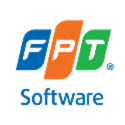Why Is a Software Factory Special and How Can We Utilize It?Why Is a Software Factory Special and How Can We Utilize It?
Discover how businesses are shifting to software factories, an automated process of producing software products repeatedly, reliably, and efficiently. (SPONSORED)
May 9, 2023

(SPONSORED ARTICLE)
Before the advent of Agile software development methodologies, software delivery had a poor success rate of around 50%, leading to the popular joke that it was like assembling a jigsaw puzzle in the dark. Despite the benefits of Agile, one of the major issues associated with software development, regardless of methodology, is the highly customized nature of the work. While efforts have been made to incorporate automation, low code, no code, and other best practices, significant customization is still required in many projects, along with the effort involved in configuration, testing, and deployment.
To address these challenges, businesses are turning to the concept of a software factory, an automated way of producing software products quickly, repeatedly, reliably, and efficiently.
Software factories allow developers to focus on delivering value by streamlining a repeatable process using automation unlike traditional software development. A software factory is essentially a set of automated tools and processes used throughout software product development, testing, and delivery.
Automation tools used in product development focus on managing the product source code and the configuration of the many server platforms used throughout the process. Categories include:
Continuous integration (CI) automatically builds and test code changes on a regular basis, ensuring that the code is always in a releasable state. Some popular CI tools are Jenkins, Travis CI, and CircleCI.
Version control systems (VCS) like Git, SVN, and Mercurial track changes to the codebase, collaborate on changes, and maintain a version history.
Configuration management (CM) are tools like Ansible, Chef, and Puppet that automate the process of setting up and configuring servers, vastly improving the many complicated and tedious tasks.
Continuous delivery/deployment (CD) tools like Octopus Deploy and AWS CodePipeline automate the deployment of code changes to servers, streamlining the processes needed to push features and bug fixes.
Test automation tools like Selenium and Appium automate the testing process, making it easier and faster to test code changes and catch bugs before they reach production.
SonarQube and Code Climate help teams identify and fix code quality issues, ensuring that the code is maintainable, scalable, and secure.
By using automation tools like these, software factories can modernize their development process, reduce errors while increasing the speed of development and deployment.
The hallmark of an efficient software factory is scalability, which is the ability of a platform to manage increasing amounts of work (resource-intensive requests) or high traffic volume while maintaining or improving its performance, reliability, and responsiveness.
Achieving scalability in a software factory requires the implementation of several key strategies, including:
Design for scalability: A software factory must be designed from the ground up with scalability in mind. This involves using scalable architectures, like microservices, and building modular/reusable components that can be easily replicated or scaled up to handle more traffic.
Use cloud computing: Cloud computing platforms like Amazon Web Services (AWS), Microsoft Azure, and Google Cloud Platform offer scalable infrastructure, including computing power, storage, and networking. By using cloud services, a software factory can easily scale up or down based on demand.
Load balancing: Load balancing distributes incoming traffic across multiple servers or instances, ensuring that each server is not overloaded. Load balancing can be achieved using hardware load balancers or software load balancers like Nginx or HAProxy.
Vertical and horizontal scaling: Vertical scaling involves adding more resources to a single server, usually adding more RAM or CPU power. Horizontal scaling involves adding more servers or instances to the platform.
Monitor and optimize performance: A software factory must continuously monitor the performance of its systems and optimize them to improve scalability. This involves using tools like monitoring software, log analysis tools, and performance testing tools to identify and fix performance issues.
Implementing a software factory requires a strategic approach. Organizations need to identify their current strengths and weaknesses, assess their existing processes, and then research tools needed to automate the development, testing, and delivery “pipeline”, often requiring a third party. Once the internal requirements have been identified, organizations need to develop a roadmap for implementing the software factory, taking into account factors like training, current and future technology stack, and infrastructure requirements.
By automating many of the processes involved in product development, a software factory can help businesses deliver quality products efficiently, while reducing costs and improving productivity. To implement a software factory successfully, organizations need to enable collaboration between development teams, operations teams, and business leaders. With the right approach, a software factory can help businesses to gain a competitive advantage in the marketplace.
FPT Software has extensive experience implementing software factories by helping organizations streamline their software development processes and improve productivity. We offer a range of services related to software factory implementation, including consulting, training, and support, as well as a wide range of tools and technologies that can be used to help automate the product development process.

Chuck Bratton is an award-winning leader with over 30 years of experience in the development of innovative content and platform services.As Vice President of Solutions at FPT Software, he works with customers to evaluate complex business applications and offer strategically innovative solutions that align to business goals, drive revenue, improve customer experience, and provide lasting value. Prior to joining FPT Software he led digital product development and IT functions at various software and media organizations.
You May Also Like





